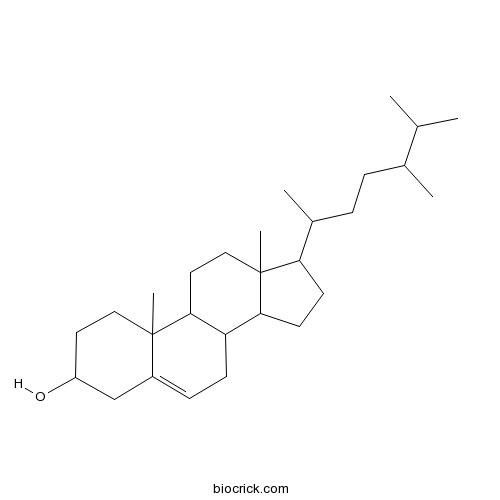InChI=1S/C28H48O/c1-18(2)19(3)7-8-20(4)24-11-12-25-23-10-9-21-17-22(29)13-15-27(21,5)26(23)14-16-28(24,25)6/h9,18-20,22-26,29H,7-8,10-17H2,1-6H3
Dietary campest-5-en-3-one (campestenone), an oxidized derivative of campesterol, can activate PPAR alpha, promote energy consumption and significantly reduce visceral fat weight and the concentration of triacylglycerol in serum and liver of rats.[1]
Campesterol oxidised derivatives and dihydrobrassicasterol have toxicity in U937 and HepG2 cells.[2]
Campesterol oxidation products have different antioxidant effects.[3]
At higher sterol concentrations, campesterol (Camp) and brassicasterol (Bras) are less miscible and less effective than cholesterol (Chol) at ordering the hydrocarbon chains of the sterol-enriched fluid DPPC bilayers, overall, these alkyl side chain modifications generally reduce the ability of Chol to produce its characteristic effects on DPPC bilayer physical properties. [4]
English website: Campesterol
Japanese website: Campesterol
Chinese website: Campesterol
[1] Ikeda I, Konno R, Shimizu T, et al.BBA-BiomembranesI , 2006, 1760(5):800-7.
[2] O Callaghan Y, Kenny O, O’Connell N M, et al. Biochimie, 2013, 95(3):496-503.
[3] Kmiecik D, Korczak J, Rudzińska M, et al. Food Chem, 2011, 128(4):937-42.
[4] Benesch M G K, Mcelhaney R N. BBA-BiomembranesI, 2014, 1838(7):1941-9.
[5] Jia M Q, Tang H, Cui-Hua L I, et al. Food Sci Technol 2013, 12(4):651.



